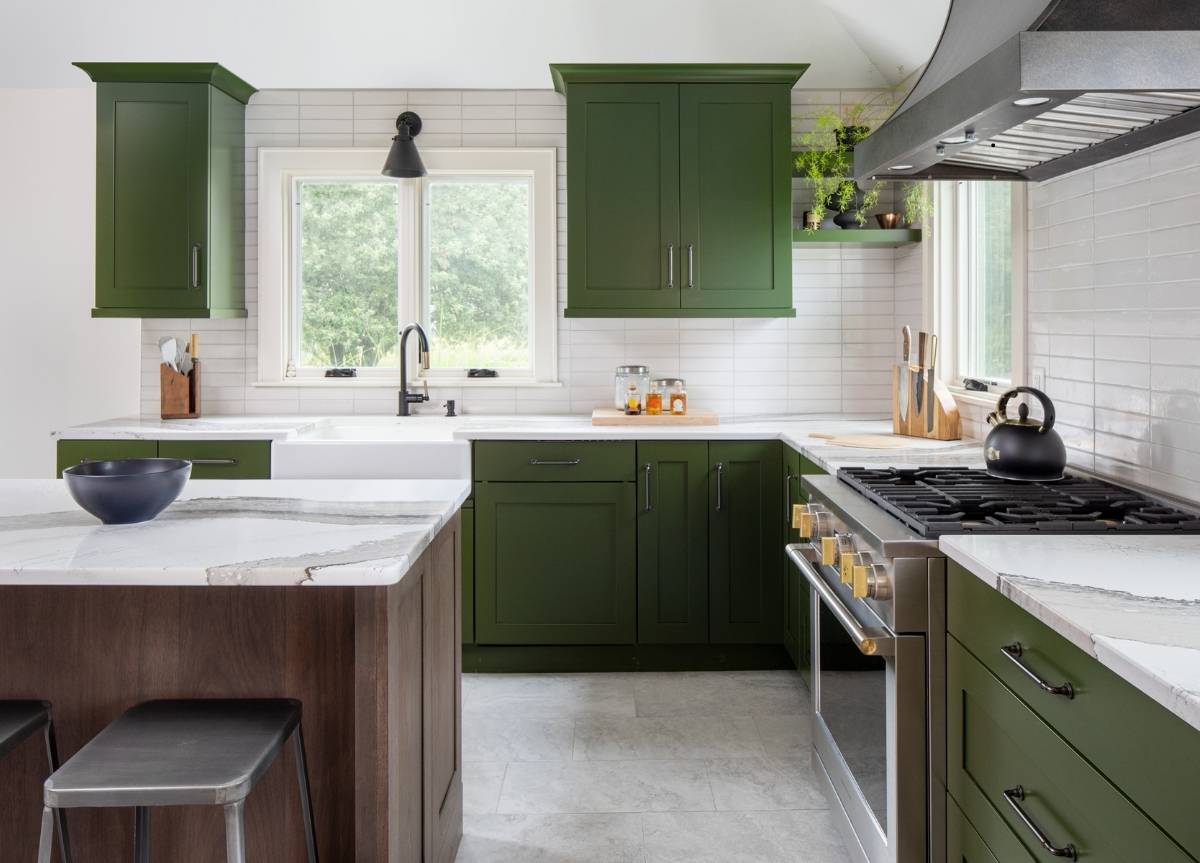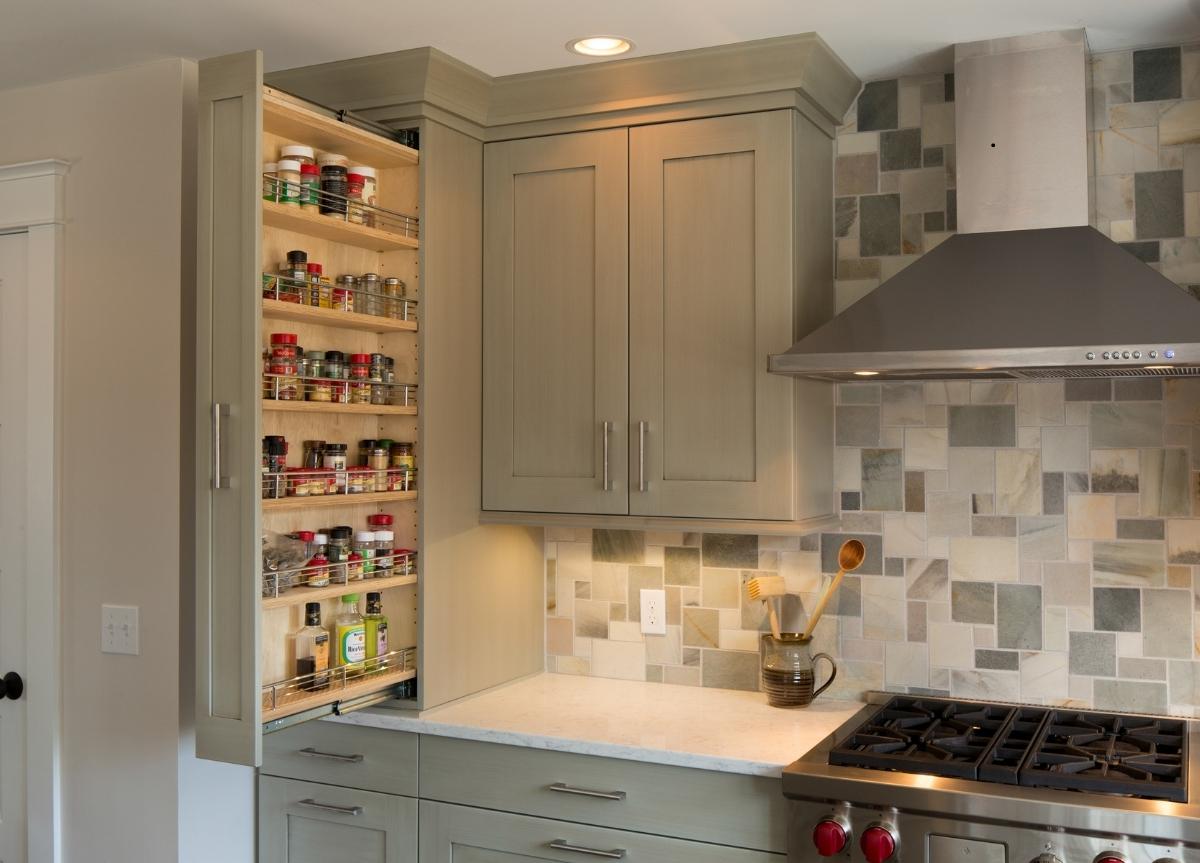
Color is one of the most powerful design elements in a kitchen, and cabinetry plays a central role in defining the look and feel of the space. While neutral tones like white, gray, and wood finishes remain popular, bold and personalized cabinet colors have been gaining traction. Whether you want a soft, inviting atmosphere or a statement-making design, choosing the right cabinet color requires careful thought.
We’ve helped countless homeowners bring their dream kitchens to life, and we know how color impacts everything—from lighting and space perception to long-term satisfaction.
Understanding The Role of Color In Kitchen Design
Color isn’t just about aesthetics; it affects how a kitchen feels and functions. Lighter shades can make a space appear larger and more open, while darker hues create depth and a sense of sophistication. Vibrant tones can inject energy, while muted shades offer a calming effect. Beyond personal preference, the right cabinet color should work harmoniously with the kitchen’s layout, lighting, and overall style.
A well-planned color scheme also considers how cabinets interact with countertops, backsplashes, and flooring. A deep navy cabinet might look stunning with bright marble counters, while a soft sage green pairs beautifully with warm wood accents. Our approach to kitchen design always takes these elements into account, ensuring a cohesive, timeless look.
Popular Cabinet Colors And Their Impact
Trends evolve, but certain cabinet colors consistently stand out for their versatility and appeal. Some shades bring warmth and elegance, while others offer a striking contrast.
Classic Whites and Neutrals
White remains a staple for a reason—it creates a clean, airy feel that works with any design style. Soft grays and greiges (a blend of gray and beige) offer a bit more depth while maintaining a neutral, adaptable look. These shades are ideal for homeowners who prefer a timeless aesthetic with room to experiment through accessories, backsplashes, or hardware.
Countertops And Surfaces
Countertops not only define the aesthetics of the kitchen but also play a crucial role in functionality. Laminate or solid surface countertops are budget-friendly, while quartz and granite offer durability and a refined look at a higher price point. High-end materials like marble or exotic natural stone will elevate the design but require a larger budget.
Deep and Moody Tones
Darker cabinet colors like charcoal, navy, forest green, and even black are becoming more common in high-end kitchens. These shades add a sense of luxury and drama, especially when paired with lighter countertops or metallic hardware. While some worry about dark cabinets making a space feel smaller, the right balance of lighting and complementary materials prevents this.
Earthy and Natural Hues
Nature-inspired shades like sage green, warm terracotta, and muted blues create a grounded, welcoming atmosphere. These colors pair well with natural stone countertops and wood accents, making them a great choice for homeowners who appreciate a warm, organic feel in their kitchen.
Bold and Playful Shades
For those who want a kitchen that stands out, deep reds, vibrant yellows, or rich jewel tones can bring energy and personality. While bold colors require more commitment, they work beautifully when incorporated thoughtfully—often as an accent on an island or a section of cabinetry rather than throughout the entire kitchen.
Factors To Consider When Choosing A Cabinet Color

A cabinet color might look perfect in a showroom or on a sample, but it’s crucial to evaluate how it fits into your actual kitchen space. Several factors influence how a color will appear and whether it will remain a choice you love for years to come.
Lighting Conditions
Natural and artificial lighting significantly affect how cabinet colors look. A deep blue might feel rich and sophisticated in a well-lit kitchen but appear almost black in a dimly lit space. Before finalizing a shade, it’s best to test samples at different times of the day to see how they change under varying lighting conditions.
Kitchen Size and Layout
Lighter cabinet colors can make a small kitchen feel more open, while darker shades can create a cozy, intimate feel in larger spaces. If a kitchen has a lower ceiling or limited natural light, a balanced approach—such as a two-tone scheme with lighter uppers and darker base cabinets—can prevent it from feeling too enclosed.
Coordination with Other Design Elements
Cabinets don’t exist in isolation; they need to work with countertops, flooring, and backsplash materials. If the rest of the kitchen features bold patterns or textures, a more subdued cabinet color can provide balance. On the other hand, if the surrounding elements are neutral, colored cabinetry can become the focal point.
Longevity and Personal Style
While trending colors can be appealing, it’s essential to choose a shade that aligns with long-term preferences. A kitchen remodel is a significant investment, and cabinet colors should feel just as enjoyable five or ten years from now as they do today. If you love a particular color but worry about its staying power, using it on an island or in select cabinetry areas can provide a balance between trendiness and longevity.
Achieving A Customized Look
The beauty of colored cabinets lies in the ability to create a kitchen that feels truly unique. Beyond selecting a shade, details like finish, hardware, and complementary design choices enhance the final result.
Matte vs. Glossy Finishes
A matte finish offers a softer, modern look that works well with muted tones and contemporary kitchens. Glossy finishes, on the other hand, reflect more light, adding vibrancy to bold shades and making a space feel brighter. Choosing the right finish depends on both aesthetics and practical considerations, such as maintenance and fingerprints.
Two-Tone Cabinetry
Combining two colors within a kitchen can add depth and visual interest. A popular approach is using a darker shade for base cabinets and a lighter color for uppers, which helps maintain a balance between warmth and openness. A contrasting island is another way to introduce a bold color without overwhelming the space.
Custom Cabinet Colors
For homeowners who want something beyond standard color options, custom cabinetry allows for a truly personalized selection.
At David Hecht Kitchens, we offer a range of custom finishes to match any design vision. This flexibility ensures that cabinets not only complement the home but also reflect the homeowner’s style.
Bringing Your Vision To Life
Choosing a cabinet color is more than a design decision—it’s about creating a kitchen that feels inviting, functional, and tailored to your lifestyle. While it can be tempting to follow trends, the best choice is one that balances personality with timeless appeal. Whether it’s a crisp white for a bright, classic look or a deep green for a dramatic effect, selecting the right shade enhances the entire kitchen experience.
For homeowners considering a remodel, professional design guidance can make all the difference. A well-planned kitchen doesn’t just look beautiful; it functions seamlessly and reflects the people who use it every day. If you’re exploring color options, working with experienced kitchen designers ensures that your space is not only stylish but also cohesive and enduring.
